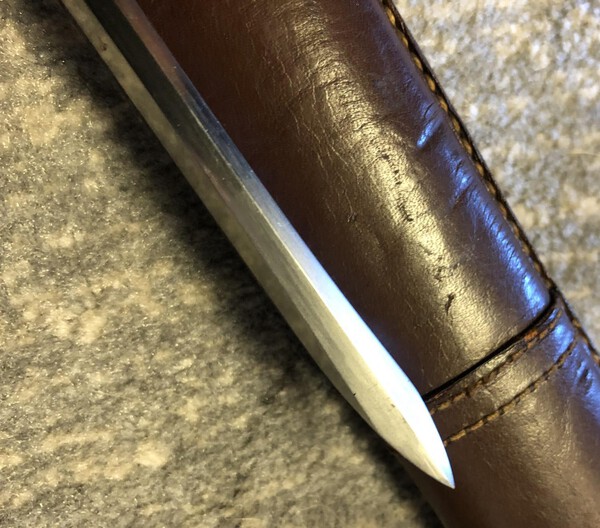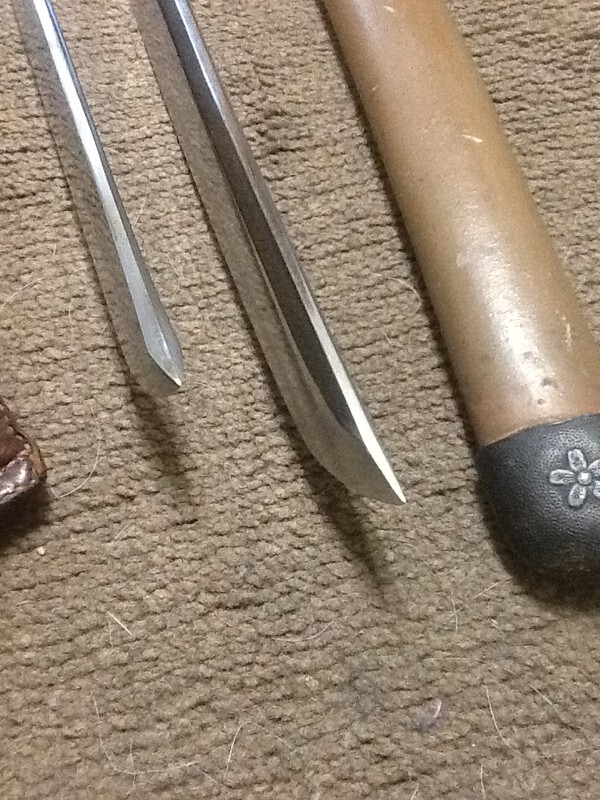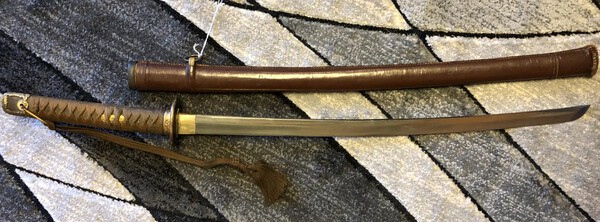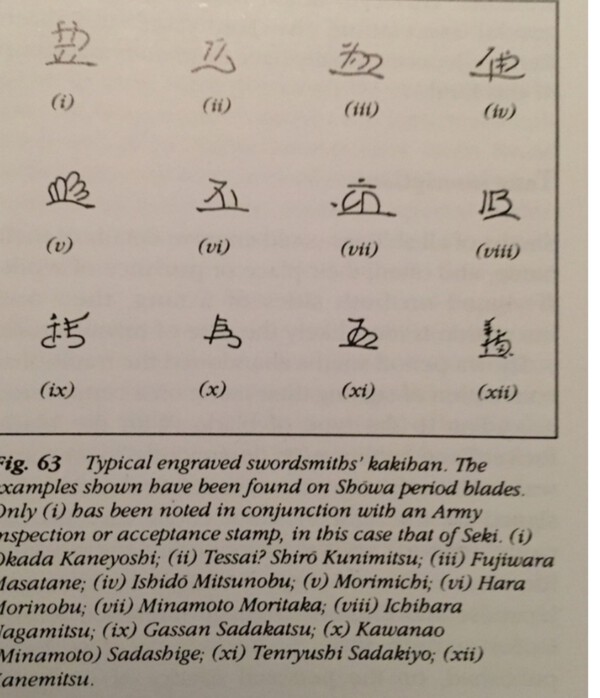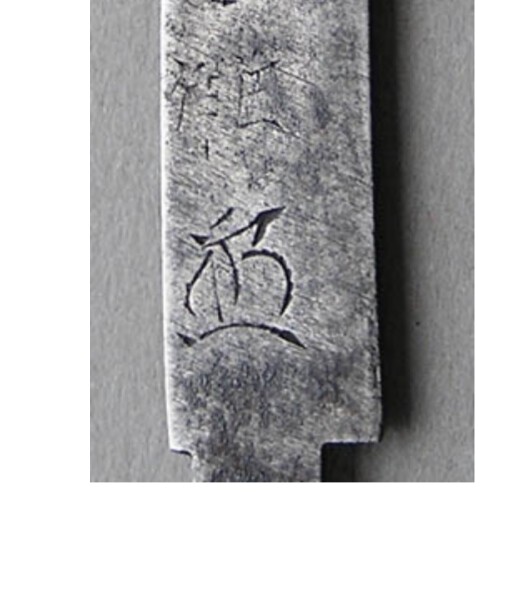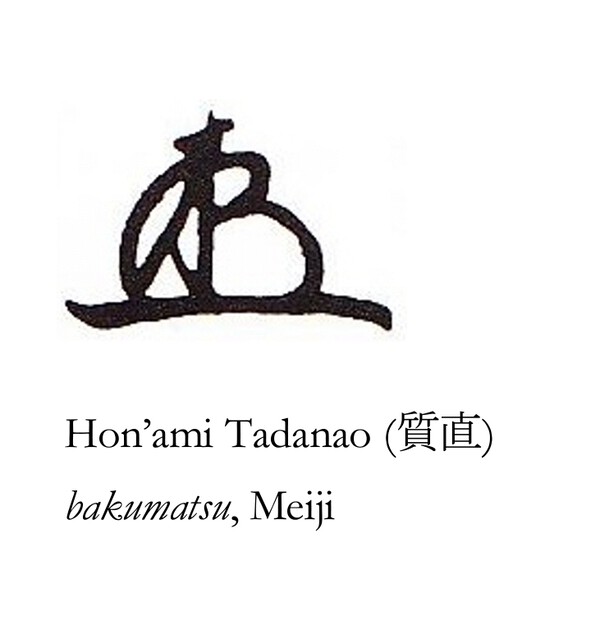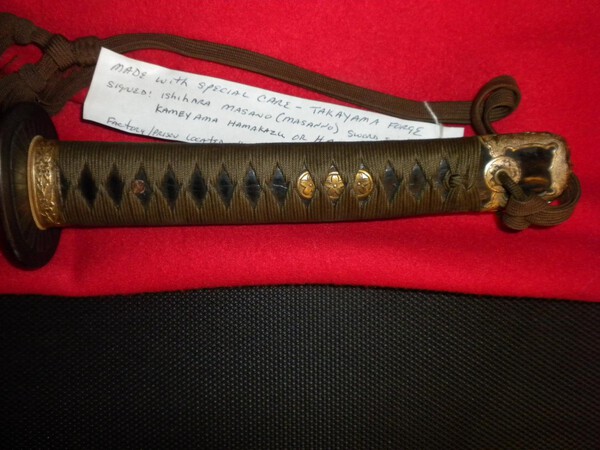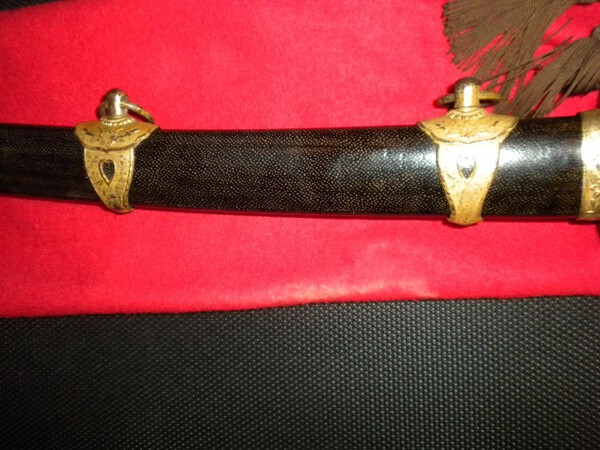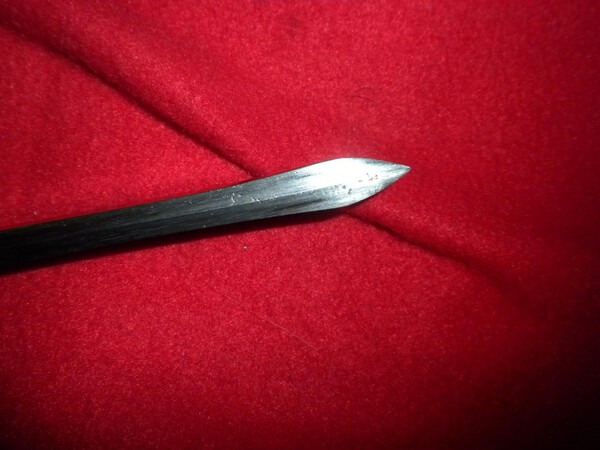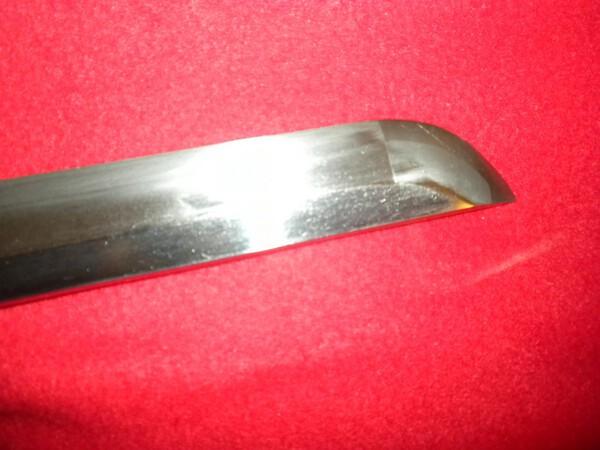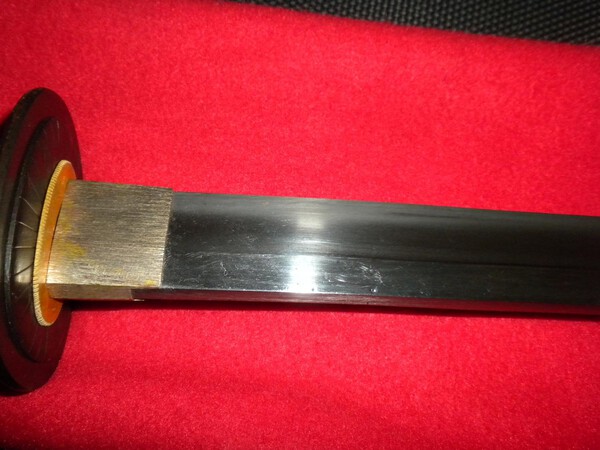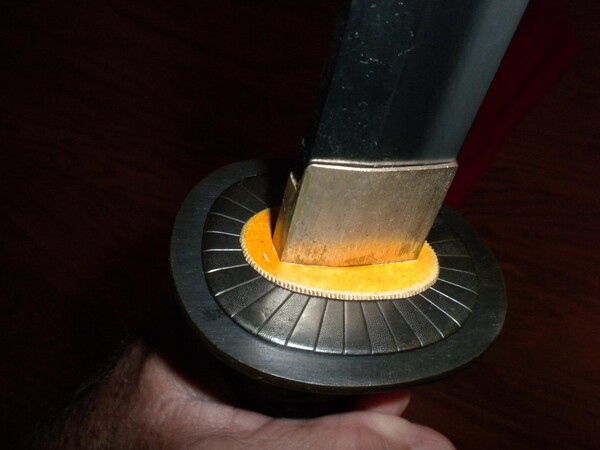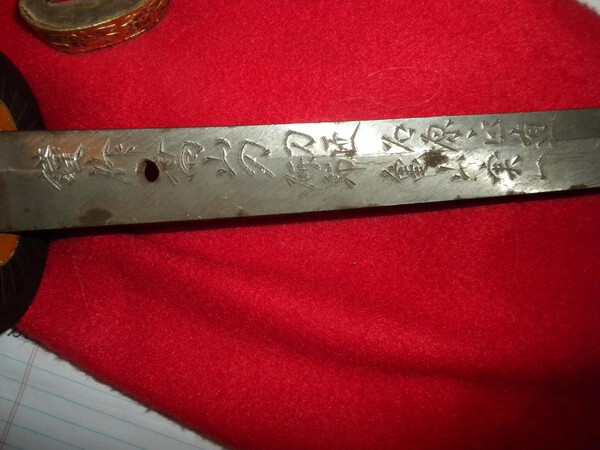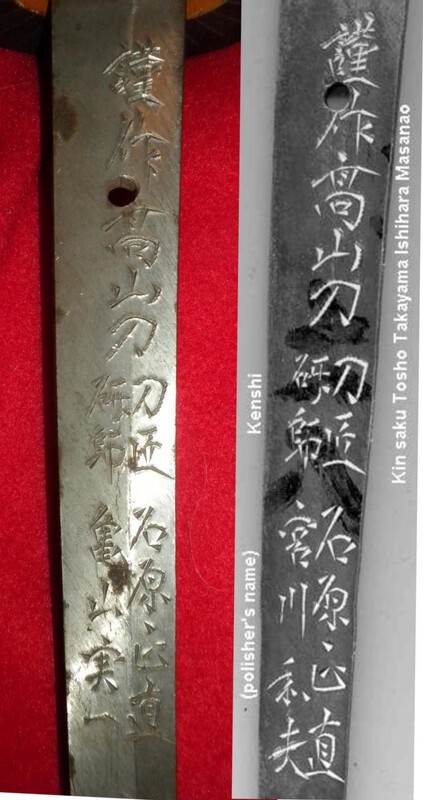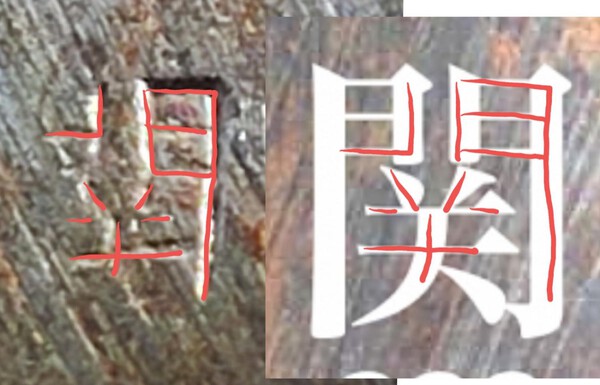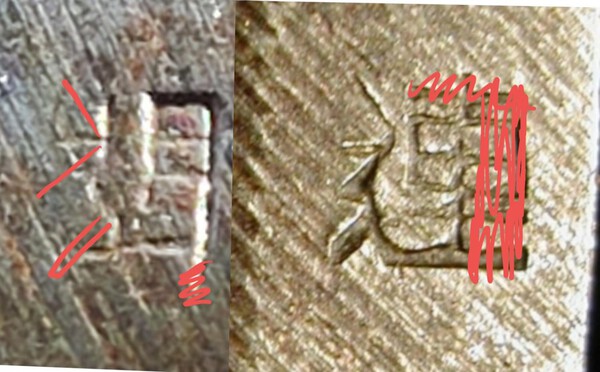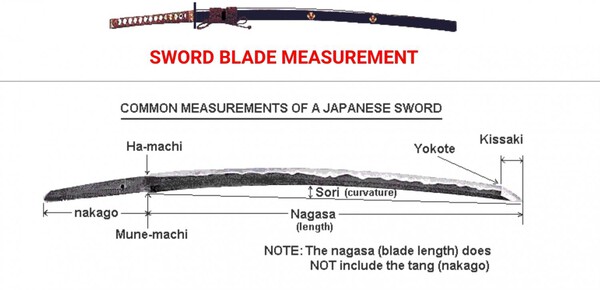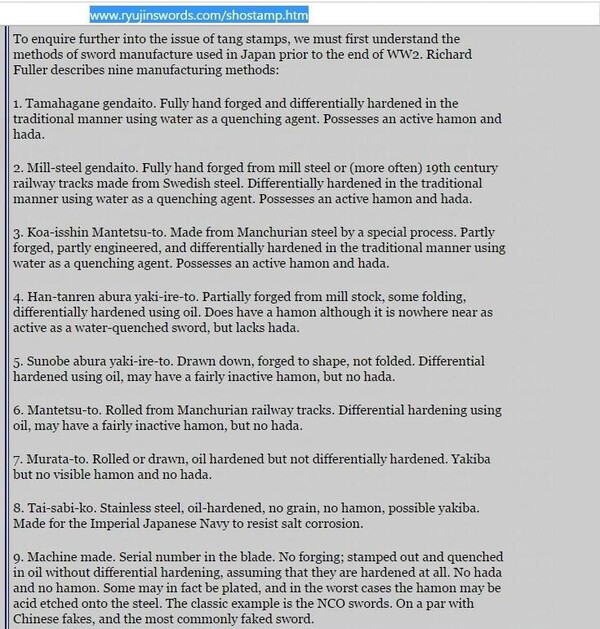-
Posts
13,042 -
Joined
-
Last visited
-
Days Won
155
Content Type
Profiles
Forums
Events
Store
Downloads
Gallery
Everything posted by Bruce Pennington
-
There are guys that can just look at the snaps and tell if they were WWII era. I don't know if they are here or over on Wehrmacht-awards. I have a leather saya, too, that looks too new. But the fit is good. Your blade, with the Showa stamp, was likely made in the 1940-1941 range. It's possible that both our swords had saya damage along the way and had these leather saya made as replacements, near the end of the war. Agree with Brian, the "tanker" "pilot" terms got started in the early collecting world by guys that didn't know about blade length classsifications. Plus, we are fortunate, today, to have internet access to tons of photos and war documents that weren't available to early collectors.
-

Nlf Gunto Discussion
Bruce Pennington replied to Bruce Pennington's topic in Military Swords of Japan
Thank you Chris, you put that into words that choke me up a bit. Not about my article, but about the fact that these swords don't just represent the end of WWII, but the end of Japanese war swords. The art and craft continue today, but none of them are made for military forces, for war. -
Wow, Chirs! I wouldn't have given the blade a second look, originally! Now, it his it's respect back!
-

Did anyone here win this auction?
Bruce Pennington replied to kolhoznik's topic in Auctions and Online Sales or Sellers
Wasn't me! -

Nice Takayama-to Kai, good price
Bruce Pennington replied to Bruce Pennington's topic in For Sale or Trade
-

Nice Takayama-to Kai, good price
Bruce Pennington replied to Bruce Pennington's topic in For Sale or Trade
It’s a characteristic of the Takayama design. The blades are shorter but heavy, designed to kill with one strike. -

Kaō identification on Naoe Shizu wakizashi
Bruce Pennington replied to Keiji's topic in Translation Assistance
Francesco A great many kao use similar styles, some only different by a stroke or two. I don't think the two you show are the same. Yours is quite a puzzle because the blade is obviously quite old, yet the kao is painted over old rust bumps in the steel. So, the kao was put on much later than the blade was made. That doesn't mean it's not an accurate name. Maybe the person who put it there had provinance, and knew who made the blade. I don't know. It's puzzling. Here are a couple more kao with similar styles to show you what I mean by the fact that this style is used by several different craftsmen. I looked through Sesko's document and the small one I have, but didn't see this one. -
Not my sword, nor do I have any stake in the sale. I don't even know the seller. But it's a tough market right now, and I just thought I'd post this here to get the kai into good hands. It's a Ishihara Masanao, Takayama-to in upgraded kaigunto koshirae - rayskin saya, leather same' On Gunboards forum: https://forums.gunboards.com/showthread.php?1155449-F-S-Double-Signed-Navy-Sword-Price-reduced-1975 Some of the pics:
-
I don't know if this helps, but here is a picture of two blades with double mei. You can see the polisher mei is just his name at the end. If that is the pattern/practice, then it could mean this one is just a name, not "made by."
-
Here's Guy's take on it, over at Warrelics. If he's unsure or confused, then it's anyone's guess! "帝国刃物株式会社石徳調之 Teikoku Ha-mono Kabushikigaisha Ishitoku Shirabe-yuki??? Imperial Sword Co., Ltd. Ishitoku Shirabe I cannot find a smith named 石徳 "Ishitoku" on Google or in Marcus Sesko's book....... Wifie says 調之 is a given name. "That's the way I read 石徳調之", says she. I asked if 調之 could be "prepared this" and she didn't think so; but ... she's not an expert in swords, etc. -- I had to explain to her that 刕 is the same as 州. I think you'll need a 5th opinion. -- Guy Edit: 調 has several pronunciations .... naturally. 之 can also be "yuki" as a given name ... so, what (IF a given name!) are our possibilities? Tsugiyuki? I hate all this guessing .......... I guess. (I need a drink right about now)" I would recommend anyone with great search skills - check for the other double mei. There are some on NMB where the second mei was the polishers mei. If there are similarities with the last 2 kanji, that tells us something. If there are no similarities, then it may indicate this is a name.
-
The second name on the other sword with a shop mei was said by the translation guys to be the polisher's name. Appearantly it is an old, widespread practice, that sometimes the polisher gets to put his mei along with the smith. May explain why you're not finding anything on him.
-
Hey, that's what we're here to do, bring it on! Just depends on what you've got though, I know stamps, and a moderate amount of WWII swords. Anything older than that will have to have the eyes of the Nihonto guys.
-
First I've heard of them, Neil, but thanks for posting. I'm filing swords with the shop name in the mei. Yours is the second now.
-

Nlf Gunto Discussion
Bruce Pennington replied to Bruce Pennington's topic in Military Swords of Japan
Don't know if this is useful or not, but I've attached an article I've written summarizing the discoveries we've made on this souvenir sword. Feel free to download and share when you come across a newbie with one, or someone asking about buying one. Thanks to all for your contributions! The Mysterious Naval Landing Forces Sword-converted.pdf -

Satsuma rebellion swords and Kinnoto
Bruce Pennington replied to 16k's topic in General Nihonto Related Discussion
Dave,Any idea why your photos don't show in that thread you linked us to? Photos from other guys show, but yours come out like this: -

A stupid terminology question...
Bruce Pennington replied to 16k's topic in General Nihonto Related Discussion
I like Ken's breakdown of the terms. Sometimes a term is created using the literal meaning of the words, but as time passes, the meaning assigned stays even if the literal translation no longer makes sense. My favorite example is Kyu-gunto and Shin-gunto. When the WWII swords were created they were the new army sword (shingunto), which made the WWI era swords old army swords (kyugunto). Now, they're all old army swords, but the terms stuck. -

Tachi-style Police Sword
Bruce Pennington replied to Bruce Pennington's topic in Military Swords of Japan
No. And like JP, first time I’ve seen an actual one. -
Thought this was interesting. "Trenchwarfare" at Gunboards posted a set of police swords, and right in the middle is a large, Type 98 styled sword with a police badge on the fuchi. Dawason covers this model on page 321, and says the style seems to be a very late war model, as the detail-work on the metal fittings is poor and the saya is a very coursely made wood painted black. The blade in the Dawson example is made in 1945. Trench's is mumei. The canvas says cover was added by the current owner. found here: https://forums.gunboards.com/showthread.php?1151595-Hello-boys-I-m-baack
-
The stamp is a partially struck Seki. Here is what you are seeing: For it to be a Ren, you'd have to be missing half of the right side (which, ok, poorly struck stamps are missing stuff), but you also have to have the indicated marks at the right diagonal angles. PS: I'm the guy that compiled that "book" you referenced! Ha!
-

Gumtree warning bells ringing
Bruce Pennington replied to lonely panet's topic in Auctions and Online Sales or Sellers
Are those for sale as a set? -

Help with Mei on a Toyokaway Nakago, Please
Bruce Pennington replied to Bruce Pennington's topic in Translation Assistance
Thank you Morita-san. Very small, and shallow too. I don't have enough examples of these blades, made as souvenirs after the war, to compare mei, but this isn't up to the normal appearance of Tenzoshan mei on the blades made during the war. -
The measurement needed is called the "sori". Here is a picture of where it's measured: This is found here: http://japaneseswordindex.com/measure.htm
-

Type 3 1945 Blade Production, And "hiro" Kanji
Bruce Pennington replied to Sugiyama's topic in Military Swords of Japan
Robinson, A list of the 9 ways blades were made during the war: The stamps indicate the blade was not made in the traditional way. I appreciate your example, because it is only the second one I have record of, with both the Seki AND the Gifu stamp. Usually you will have one or the other. Gifu was a city in the Seki province, and Gifu started using their own stamp around 1944. Here is the history of the "Type 3", or Contingency model (Rinji Seishiki, in Japanese): http://www.warrelics.eu/forum/Japanese-militaria/deflating-another-myth-type-3-army-officera-s-sword-expanded-version-584796/ -

Type 3 1945 Blade Production, And "hiro" Kanji
Bruce Pennington replied to Sugiyama's topic in Military Swords of Japan
Yup! You got it! -

Type 3 1945 Blade Production, And "hiro" Kanji
Bruce Pennington replied to Sugiyama's topic in Military Swords of Japan
thanks, but be sure to show the full length of the tang. I may matter where this last stamp is postioned. I'd appreciate that!



